Introduction
It took Brahms more than 20 years to write his first symphony. The second premiered 1 year after the first; the third came six years later, and his fourth and last symphony after another 2 years. All 4 symphonies are remarkably different from one another, and yet all of them are quintessentially Brahms.
But the 4th symphony is the one that adheres the most to the classical forms combined with the aesthetics of romanticism. Brahms goes even further back in time in the last movement of the symphony, using a pre-classical form, the passacaglia, as its base.
The first movement itself is in sonata form with some variations: there is no introduction, there is no repetition of the exposition, and there are 3 thematic groups.

Portrait of Johannes Brahms by C. Brasch (1889)
Johannes Brahms – An analysis of the 1st movement of his 4th symphony
Exposition
In case you don’t have it at hand, here’s a quick link to the score.
The first thematic idea of the exposition is characterized by a dreamy cantability; the violins play the theme in octaves, softly supported by the held sounds of the horns and the arpeggios of the violas and cellos. The woodwinds, minus the oboes, counterpoint with the same theme in thirds, 2 quarter notes apart from the violins.
Oops...
This content is available for free with all memberships.
Already a member? Login here.
Not a member yet? Subscribe today and get access to more than 80 videos, scores analysis, technical episodes, and exercises.
Technical tip
There is one thing in particular you should pay attention to: the length of the notes. It’s very easy to hear the half notes of the theme fade away, turning into quarter notes or dotted quarter notes. Register the line and keep in check the length of your stroke.
For a full technical analysis, look up the video in the repertoire section
On bar 29 the situation seems to change. But the musical material folds back on itself. The same idea is presented again, shortened, but driven by a crescendo to a forte. You’ll notice that throughout this entire movement the way Brahms keeps playing with the same ideas, transforming and reworking them, is staggering.
The rhythm of the first theme is shortened already on bar 13 and 37. And even more on bar 42. This rhythmic diminution increases the tension and anxiety of the musical phrase, pushing it forward to a resolution that Brahms keeps putting off. Just when we think the tension is about to resolve, Brahms stretches it again, landing on the second thematic idea.
It starts on the minor key of the dominant in the woodwinds and horns with this rhythmical figure we will see so much of, followed after 4 bars by a dramatic and intense line sung out by the cellos and horns, and then the violins.
4 bars before letter E the tranquillity of this passage is interrupted by ominous figures of the strings, rising and falling over 3 bars, on timpani roll.

Technical tip
Bring back your hands towards your body before this section and collect the sound. You can lightly register the line but keep everything pianissimo with no crescendo.
Make sure you pulse on the downbeat of letter E: this will ensure the short note and the clear attacca for the rhythmic element
For a full technical analysis, look up the video in the repertoire section
In the background, we hear the incipit of the rhythmic motive played by the trumpets. That same motive becomes more and more insistent driving the orchestra to a fortissimo and to the conclusion of the exposition.

Development
A piano subito gives way to the coda of the exposition, based on the head of the first theme. After 8 bars, the first theme reappears just like at the beginning, as if it was a normal repeat of the exposition. In reality we are already in the development section of the movement and the theme starts getting reworked after a few bars.

Look at how the first musical idea pops up in the background in the woodwinds line. This very same variation forms the base for the first forte of the development

landing on the rhythmical figure of the second thematic group, this time in pianissimo and legato

The ominous figures of the strings are back, interlacing with the rhythmic idea which eventually takes over

The tension increases, the triplets of quarter notes lead the way on something that seems about to explode

but instead turns its way back: the triplets are used in a lovely line in the clarinets and bassoons while the flutes and strings counterpoint with the first theme

The atmosphere relaxes and time is stretched. We’re approaching the end of the development. Once again, the head of the first theme makes its appearance, in an elongated version in the woodwinds

answered by the now familiar figures of the strings

Recapitulation and coda
We are at the recapitulation. The first theme is, once more, variated

while the second and third theme are brought back in the home key.
The coda, starting on bar 394, re-elaborates the first theme, shortening it and, naturally, increasing the tension

The movement ends on powerful tutti chords with a dramatic timpani part on the second to last bar, on the subdominant chord

In conclusion
Sooner or later this is a piece that every conductor encounters on its path. It’s teutonic in structure but so fragile in its lines: finding a balance between the different aspects of this movement is one of the most challenging and satisfying aspects of this job.

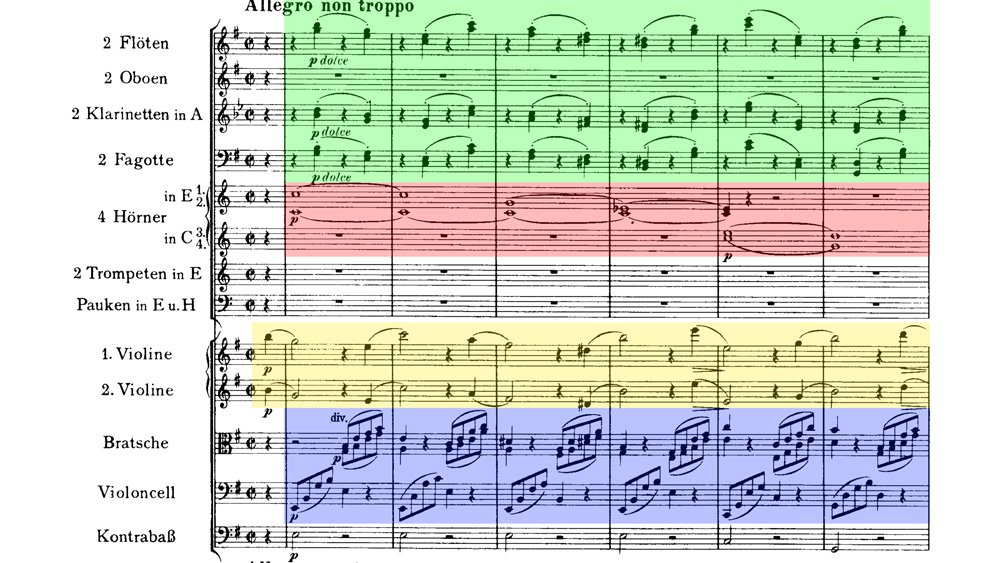

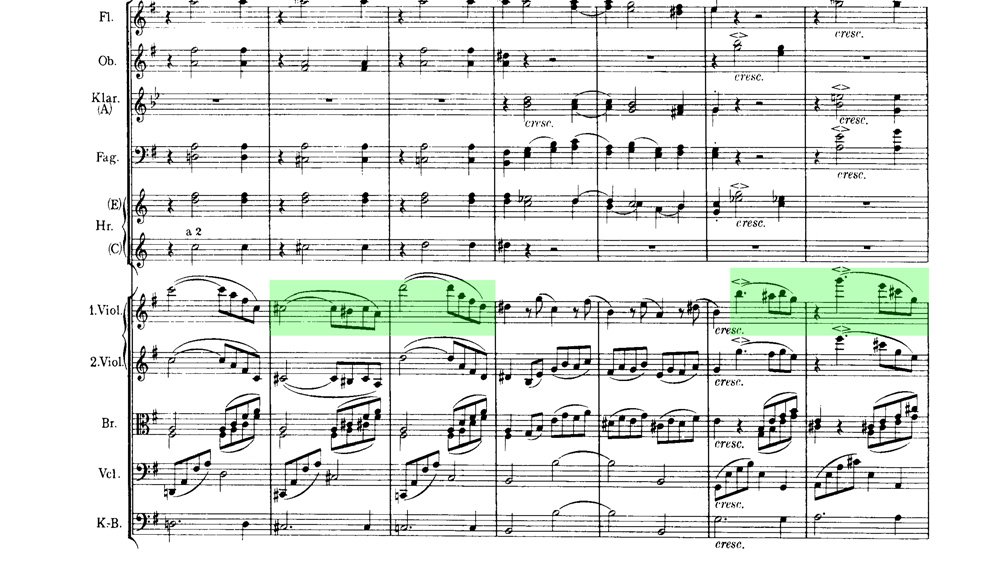
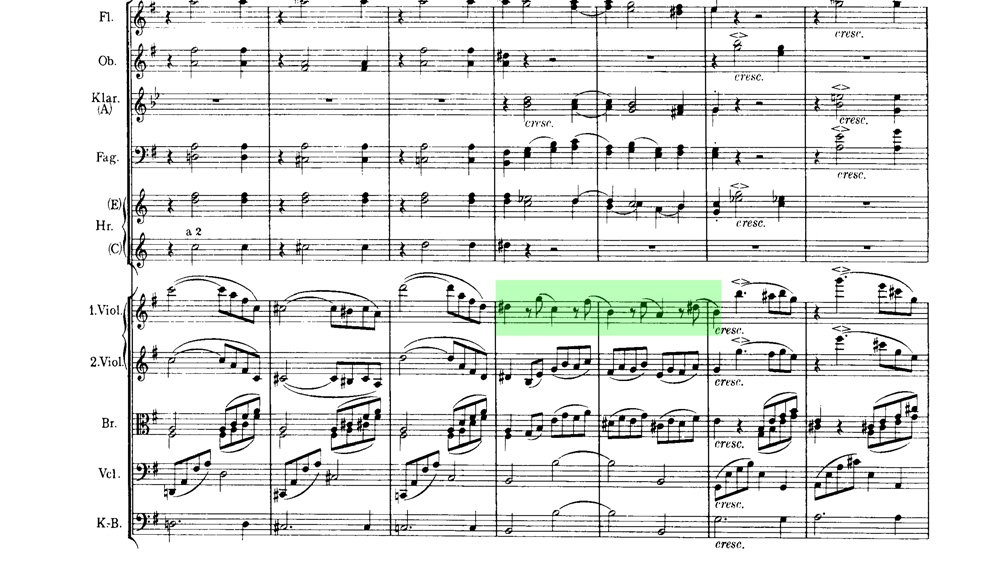

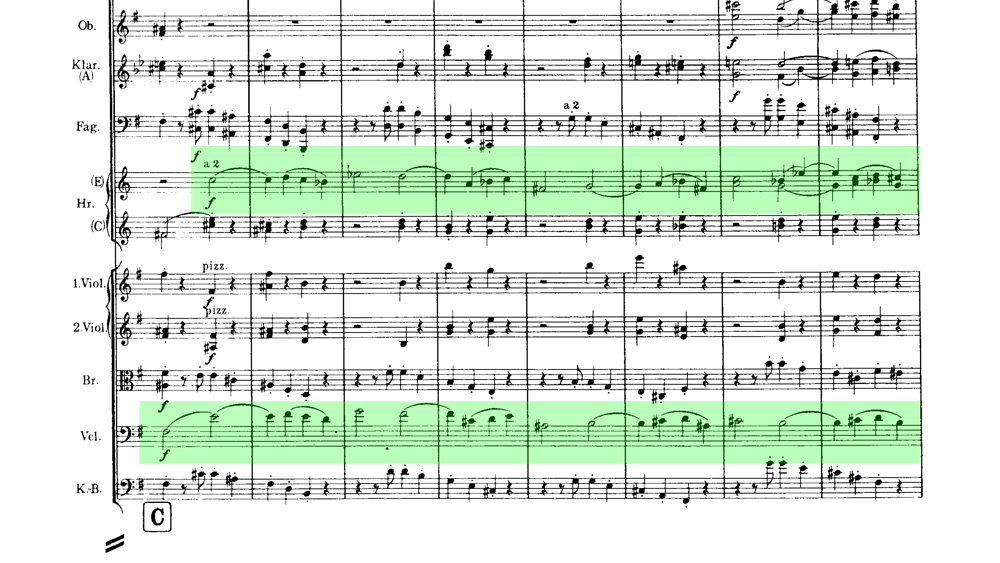
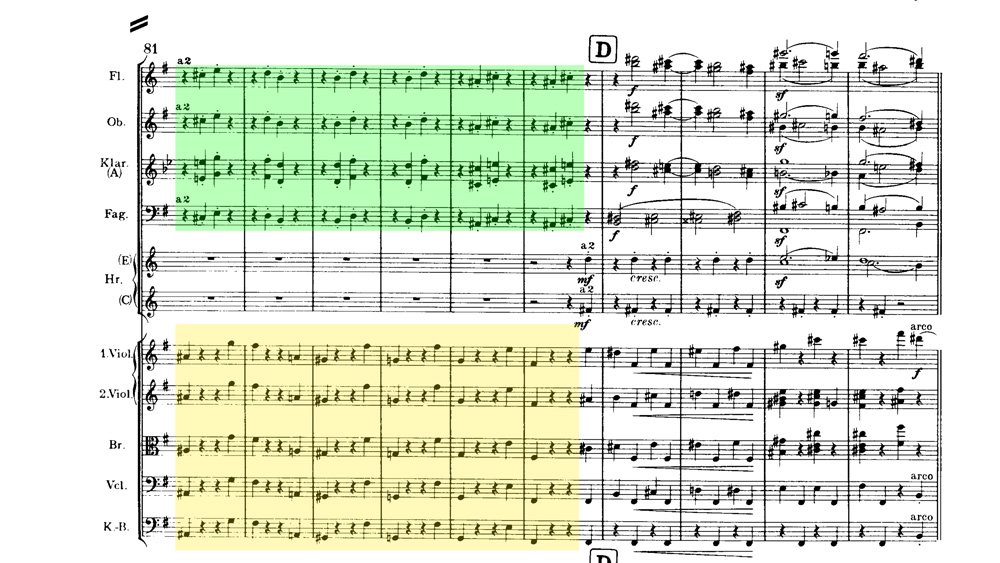
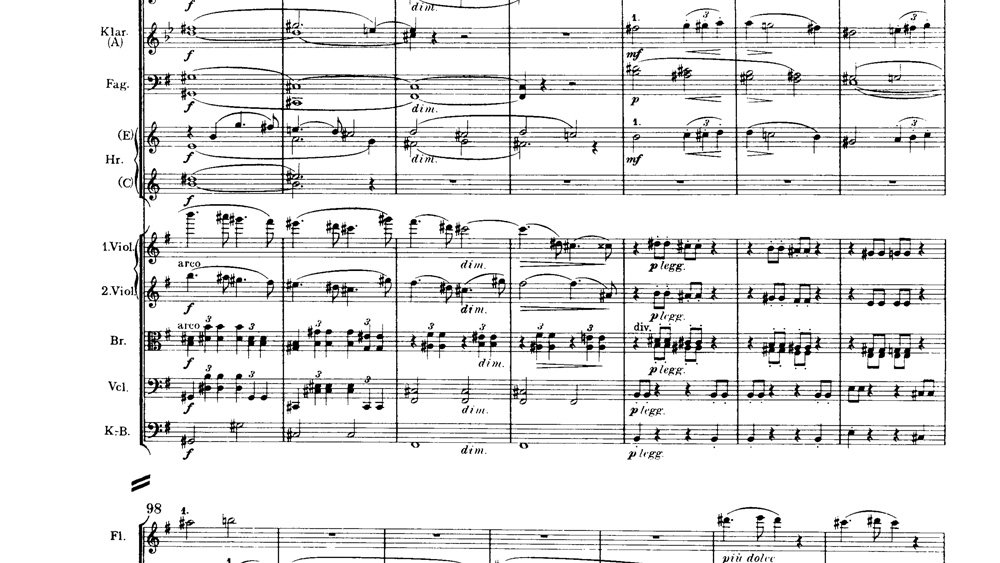
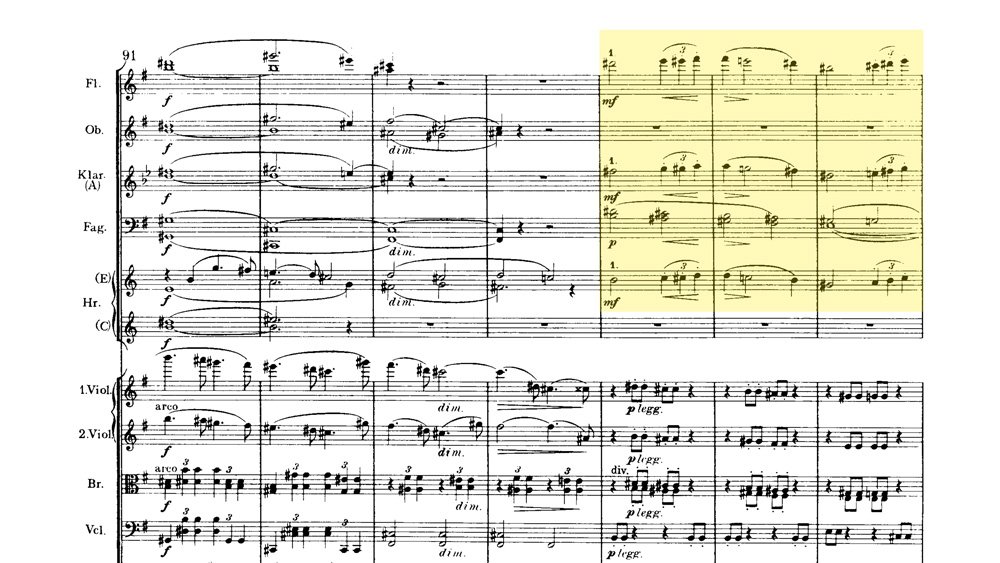




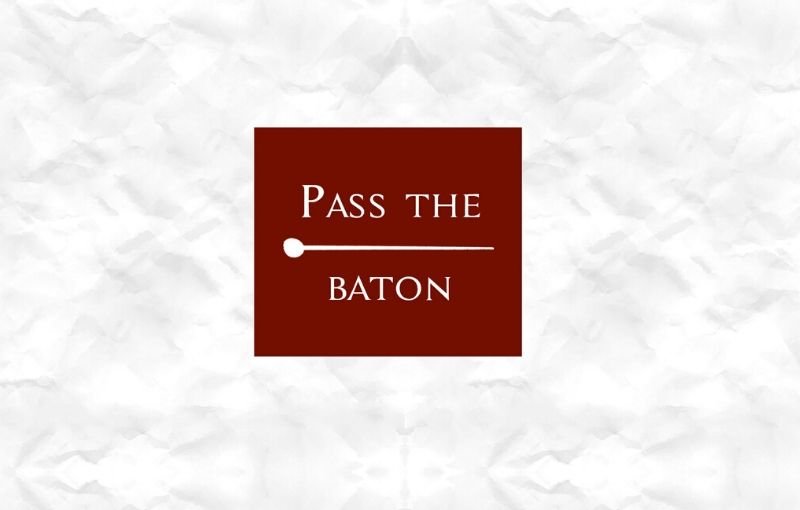
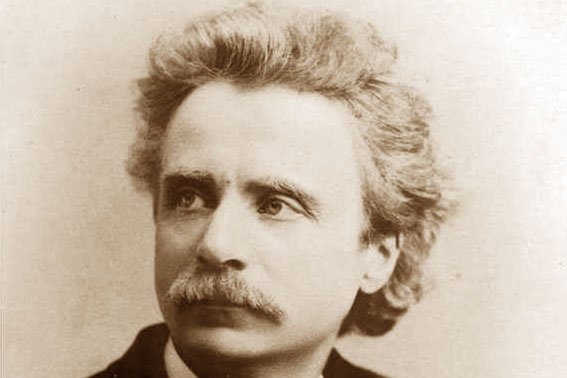



0 Comments